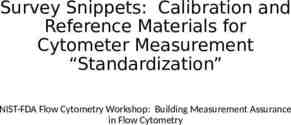Phonetics Overview/review Transcription Describing Consonants
14 Slides360.00 KB
Phonetics Overview/review Transcription Describing Consonants
Overview Referring to sounds, NOT LETTERS How do describe a sound? Produce it 3-way description The sound indicated by the symbol [p]
International Phonetic Alphabet One-to-one relationship between symbol and sound Universal Based on roman alphabet, but they are not letters
Transcription Practice Transcribe: Your name Linguistics, hiccup, teeth, teethe, delay, should, sign, sane, phonetics, yellow
Describing Consonants We use three parameters to describe consonants: Voicing Place of articulation Manner of articulation The IPA chart shows all three parameters for each phone
Voicing The state of the vocal folds (VF) determines whether a sound is voiced or voiceless When VF are open air can pass through it freely, without any vibration When VF are drawn close together air passes through it with w/ difficulty, creating vibration Compare [s] vs [z] ; [f] vs [v]; [k] vs [g]
Place of Articulation Refers to WHERE in the vocal tract a constriction is made (generally with some part of the tongue)
Vocal Tract
Places of Articulation (See p. 39-40 in CP) Bilabial [ ] Closure of both lips Labiodental [ ] Lower lip touches upper teeth (Inter)Dental [ ] Tongue protrudes through teeth Alveolar [ ] Tongue touches alveolar ridge
Places of Articulation, Continued Palatal [ ] Top of tongue approximates/touches the middle/hard palate Velar [ ŋ [ ŋ]] Back of tongue touches the soft palate/velum Glottal [ ] Opening or closing of the glottis (the space between the vocal folds)
Manner of Articulation Refers to HOW this constriction is made
Manners of Articulation Stop [ ] & [ ] airflow through mouth is completely impeded Fricative [ ] narrow constriction produces turbulence Affricate [ ] a stop followed by a fricative
Manners of Articulation, cont’d Nasal [ ] air flows through the nose; velum is lowered Approximants [ (liquids)] [ (glides)] wide constriction that does not produce turbulence ** FLAP: the voiced alveolar flap is also an English sound (prevalent in US English).**
Drills Voicing VD or VL Place BL, LD, ID, A, P, V, G Manner S, F, AF, N, AP



















